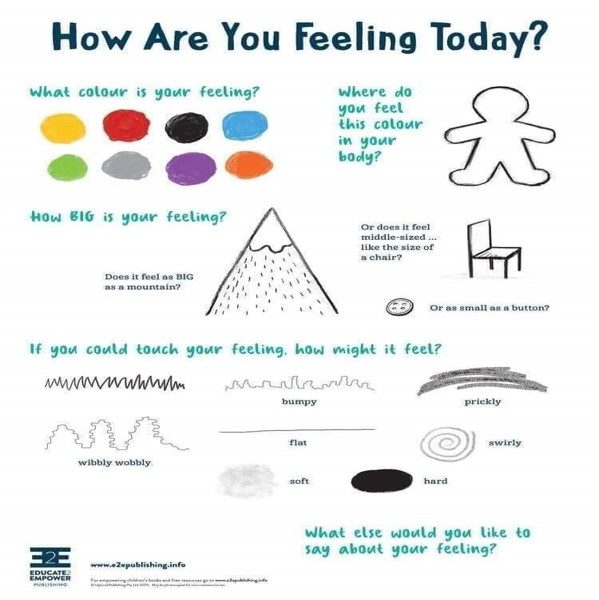Adults play a key role in helping C&YP to develop a toolkit of strategies which will help them cope with strong emotions.
The first stage is co-regulation where adults & children regulate together in a shared process. Then comes, self-regulation, where children can draw on the approaches they experienced with adults who supported them, in order to regulate their own emotions.
What Young People Tell Us
See Me Youth Champions and Youth Workers (2020) conducted a study to gauge what young people feel about how adult support them – Below are some comments shared:
- Avoid patronising language or tone
- Create a safe space
- Follow up (where possible)
- Show empathy and recognition
- Involve us in decisions
- Don’t dismiss feelings or experiences, “chin up“
- Don’t push someone to share
6 Domains of Self-Regulation
The Mehrit Centre (https://self-reg.ca/individualtoolkit/) have identified 6 possible stressors within the school setting – how can we limit the negative impact in each area?
Visual Clutter:
- All surfaces (e.g.desks, shelves)in the classroom are free of excess clutter
- Walls and bulletin boards are organized with information grouped simply
- Desk sized copies of tools usually displayed on walls (e.g. number or letter lines) are available to students, and neatly put away when no tbeing used
- Desk top study carrels to reduce visual input when working at a desk
- The floor is clear and clean
Lighting:
- Lighting is adjusted throughout the day according to the arousal needs of the classroomo
- Natural lighting is maximized where available
- Fluorescent lighting is minimized where possible
- Differently lit areas are available for students to access, based on their preferences(a bright area, and a dimmer lit area)
- Curtains to create a darker area and use of lamps for ambiance
Noise:
- Excess noise is reduced where possible(e.g. weather stripping on doors)
- Reverberation is reduced (e.g. carpets, egg cartons on walls)
- Noise cancelling headphones or earbuds are available or allowed
- Electrical humming from lights, heating/cooling vents, electronics, etc. is minimized
- A non-startling noise used to indicate class change overs or breaks(e.g. a rain stick)
Hydration& Nutrition:
- Access to water at desko
- Regular hydration breaks available throughout the day
- Healthy meals served from the cafeteria
- Encourage healthy snacks
- Spare water and healthy snacks in classroom
- A variety of seating or standing options available (tick all available)
Seating options:
- Standing desks or surfaces
- Peddle desks
- Stationary bike with an easel
- Bean bag chairs
- Couch
- Carpeted open floor space
- Students are able to use these options throughout the day
Smells:
- No perfume
- Minimize food smells
- Scent free, or neutral scent cleaning supplies
- Minimize smoking related scents
There are many helpful strategies to support co & self-regulation processes:
Daily Check-ins
A check-in could be a verbal or written indication of how someone is feeling.

5 Point Scales
Using a scaled approach, helps C&YP to identify how they feel on a continuum & how to help them feel better when emotions escalate.

Emotion Wheels
Alan McLean (Glasgow Educational Psychologist) when speaking during a Moray House Webinar (2022), reminded us that emotions have a purpose – even difficult ones. They can help us to focus and perform at an optimal level.
He said that we can’t control our emotions but we can control our response and that wellbeing is not so much about feeling good as being good about feeling.
Our role in supporting children & young people to cope with strong or difficult emotions is key – We only understand what we feel when we label it & young people have the labels adults teach them.
An emotion is our interpretation of our sensations, telling us what is happening to us & what we should do about it. What turns sensations into emotions is the ‘charge’ that gets added to them by our ‘cognitive framing’ or frame of reference.
Our cognitive framing interprets the cause & purpose of the emotions we feel.
Discussions around the complexities of emotions can be helpful in allowing C&YP to see the subtle gradients of feelings.


